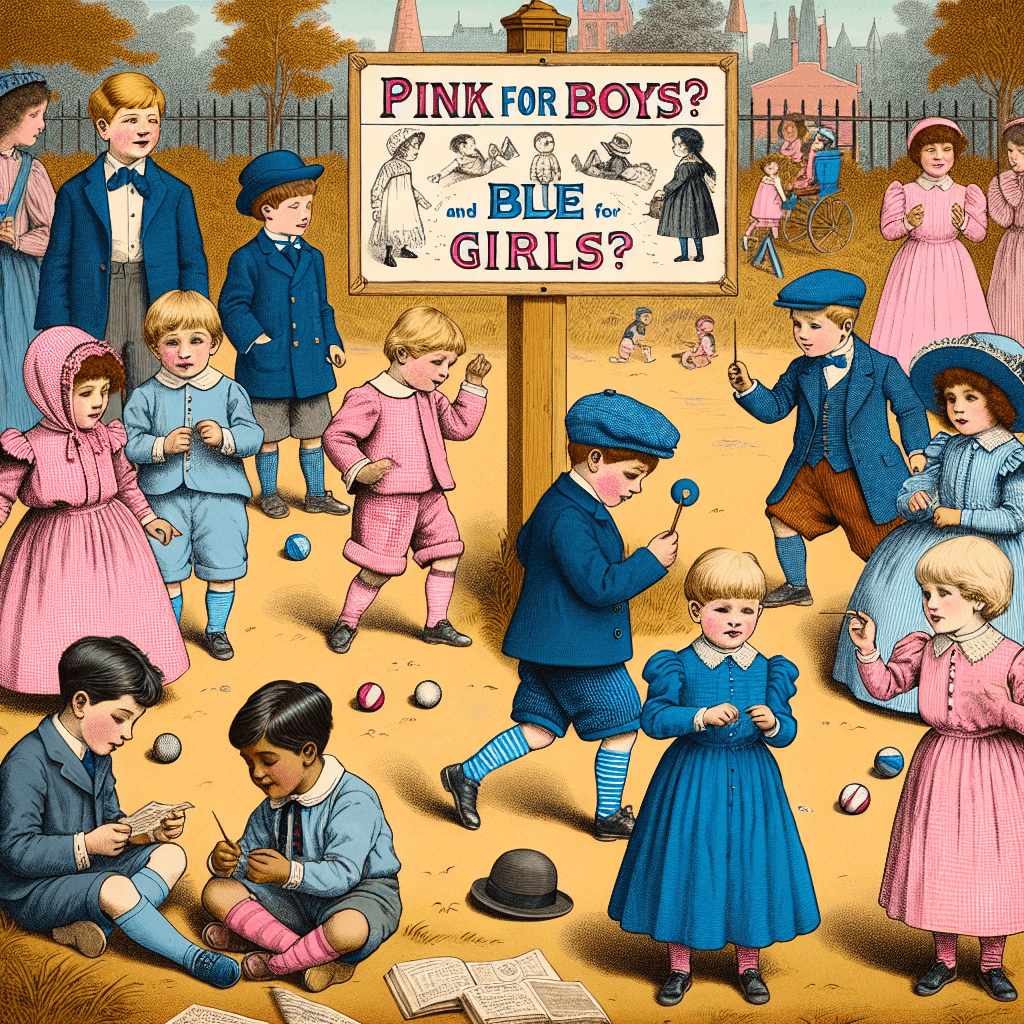Pink for Boys, Blue for Girls The Surprising History of Gendered Colors
We think of pink for girls and blue for boys as a timeless rule, but history tells a different story. Discover the fascinating and surprisingly recent switch in our color-coded gender norms.


Too Long; Didn't Read
The 'pink is for girls, blue is for boys' convention is a modern invention. It used to be the other way around, with pink seen as a strong color for boys and blue as a delicate one for girls.
Pink for Boys, Blue for Girls? Unraveling the Truth About Gendered Colors
Walk down any modern baby aisle, and you'll be flooded with pink for girls and blue for boys. It seems like an unshakable rule, deeply ingrained in our culture. But have you ever heard the persistent claim that it used to be the other way around? Was pink really once considered the go-to color for baby boys, and blue the preferred shade for girls? This fascinating question challenges our assumptions about gender norms and the history of color. This post delves into the historical evidence to separate fact from fiction and understand how today's color associations came to be.
The Muted Past: Colors Before the 20th Century
Before the early 20th century, the idea of assigning specific colors to baby boys and girls wasn't really a widespread practice. Practicality often reigned supreme. Infants, regardless of gender, were commonly dressed in white. Why?
- Ease of Cleaning: White fabrics could be easily bleached to remove stains, a crucial factor in the days before modern washing machines.
- Universality: White was neutral and suitable for any baby.
- Hand-Me-Downs: Gender-neutral clothing facilitated passing items down among siblings.
While older children and adults certainly wore colors, strict gendering of pastel shades for babies wasn't the norm we see today. Colors held various symbolic meanings, but associating pale pink specifically with girls and light blue with boys hadn't taken hold.
A Hint of Pink for Boys: The Early 20th Century Confusion
The idea that pink was once for boys primarily stems from references emerging in the early 1900s. Perhaps the most frequently cited source is a trade publication from 1918.
Earnshaw's Infants' Department June 1918:
This publication noted: "The generally accepted rule is pink for the boys, and blue for the girls. The reason is that pink, being a more decided and stronger color, is more suitable for the boy, while blue, which is more delicate and dainty, is prettier for the girl."
However, this wasn't a universally accepted decree. Research into publications from the same era reveals a lack of consensus:
- Some sources echoed Earnshaw's.
- Others, like a 1927 Time magazine article, reported department stores in major cities like Boston, New York, and Chicago advising pink for girls.
- Many sources simply didn't mention any specific color rule, suggesting it wasn't a widespread concern.
So, while there's some historical basis for the "pink for boys" claim, it reflects a period of flux and regional variation rather than a firmly established tradition. It was one suggested convention among several, not the rule. Blue's association sometimes linked back to perceived delicateness or historical associations with the Virgin Mary's robes, while pink was occasionally seen as a paler version of powerful red.
Solidifying the Blue and Pink Divide: Post-War Marketing
The color divide we recognize today truly began to solidify after World War II. Several factors contributed to this shift:
- Rise of Consumer Culture: The post-war economic boom led to increased manufacturing and marketing. Retailers found that assigning specific colors was an effective way to sell more distinct product lines for boys and girls.
- Gender Role Reinforcement: The era emphasized traditional gender roles, and color became an easy visual cue to differentiate boys and girls from birth.
- Mass Production: Standardizing colors simplified mass production and inventory management for clothing and nursery items.
By the 1950s, the "pink for girls, blue for boys" convention became much more entrenched, heavily promoted through advertising and embraced by consumers. While challenged briefly by the unisex trends of the 1960s and 70s, the association returned with renewed force, particularly from the 1980s onwards, coinciding with innovations like prenatal testing that allowed parents to know the sex of their baby beforehand and shop accordingly.
Conclusion: A Constructed Convention, Not Ancient History
So, was pink originally for boys and blue for girls? The answer is nuanced. While there's documented evidence from the early 20th century suggesting some people recommended pink for boys (as a stronger color) and blue for girls (as more delicate), this was far from a universal or long-standing rule. It existed alongside conflicting advice and general indifference to gendering baby colors. The widespread, deeply ingrained association of pink solely with girls and blue solely with boys is largely a mid-20th-century phenomenon, heavily influenced by marketing and cultural shifts after WWII. Understanding this history reminds us that color associations are socially constructed, powerful, and remarkably recent conventions, not timeless truths.
More Articles

What creates the warm crackle sound unique to vinyl records?
That iconic warm crackle is more than just dust and nostalgia—it's the sound of a microscopic story of friction and physics being told in real-time.

Why do some insects build and wear a backpack made from the corpses of their victims?
For some of nature's tiniest predators, the best defense is a grisly offense—building a protective shield from the corpses of their vanquished prey.

Why are Earth's deserts not random, but aligned in two distinct belts?
It’s not a coincidence that the world's great deserts are aligned in two perfect bands; they are the direct creation of massive, invisible rivers of air that perpetually circle the globe.